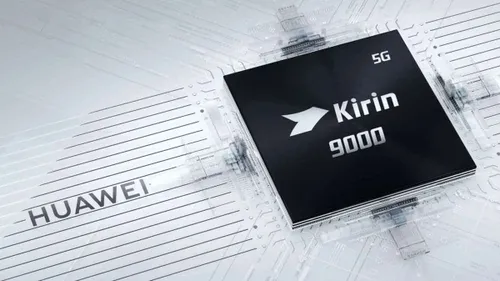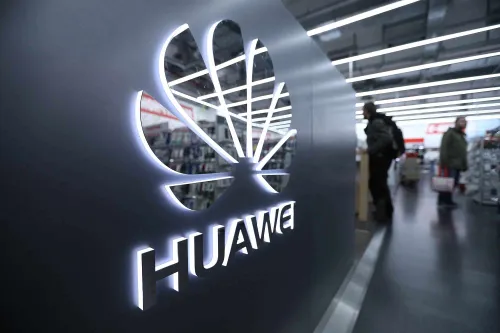Huawei's Bold Move: New Billion-Dollar Chip Center Amid U.S. Sanctions
HuaweiFriday, 19 July 2024 at 22:00

Huawei, the leading Chinese tech company and the world's largest telecommunications equipment supplier, has built a new research and development center in Shanghai. This comes as the company faces pressure from U.S. sanctions aimed at stopping its advanced technology efforts.
Huawei Invests Big in Innovation

The Huawei Lianqiu Lake R&D Center will start operating this year. Huawei invested over 10 billion yuan (about $1.4 billion) in this center. The Qingpu district government says this center will help Huawei make big advances in 5G, cloud computing, and artificial intelligence. Nearly 30,000 people will work there to develop chips, wireless networks, and internet technology.
Huawei's investment shows its commitment to staying a global tech leader despite challenges. The large number of workers and big investment highlight the project's importance to Huawei.
Facing U.S. Sanctions
The U.S. added Huawei to a trade entity list in 2019. This limits Huawei's access to key technology and parts from American companies. In May, the U.S. stopped special licenses that allowed Intel and Qualcomm to sell to Huawei. Despite these issues, Huawei keeps innovating. It recently launched the Mate 60 Pro smartphone with the advanced Kirin 9000s chip.
These sanctions are forcing Huawei to become more self-reliant. By focusing on its own research and development, Huawei aims to reduce its dependence on foreign technology. This strategy is vital as the company navigates tough global challenges.
Huawei Chip Technological Advances and Challenges

The Kirin 9000s chip uses advanced 7-nanometer processing technology. China’s top chipmaker, Semiconductor Manufacturing International Corp. (SMIC), made this chip. This is a big win for Huawei and a setback for U.S. sanctions. However, reports say SMIC used technology from U.S. companies Applied Materials Inc. and Lam Research Corp. to make these chips. SMIC had this technology before the U.S. stopped companies from selling advanced chips and equipment to Chinese firms in October 2022.
Despite these advances, U.S. Secretary of Commerce Gina Raimondo said Huawei’s smartphone chips "are not nearly as good" and "years behind what we have in the United States." This shows that U.S. export controls are having an effect.
Huawei's progress with the Kirin 9000s chip shows it can innovate under pressure. But using U.S. technology highlights the challenges of becoming fully self-reliant. Producing competitive technology without foreign help remains a key issue.
Production and Supply Chain Issues
Huawei also struggles to increase production. It has trouble making its Ascend 910B chip, China’s best alternative to Nvidia’s chips. Nvidia chips can no longer be sold to Chinese customers. Parts in repurposed chip fabrication machines are breaking down, making it hard for Huawei to produce these chips.
Scaling up production is a big challenge for Huawei. Ensuring a steady supply chain and fixing production issues are vital for success. These problems show the broader impact of U.S. sanctions on Huawei.
Looking Ahead: Huawei Chip Development

The Huawei Lianqiu Lake R&D Center shows Huawei's dedication to overcoming U.S. sanctions and achieving technological independence. This center will be key in developing new technologies and reducing reliance on foreign tech.
Huawei must keep innovating and adapting to survive international trade restrictions. Building strong R&D infrastructure and developing advanced technologies are crucial steps. This will greatly impact the global tech landscape, especially in 5G, AI, and chip manufacturing.
Huawei's strategy of investing in its own capabilities is a response to U.S. sanctions. By focusing on self-reliance and innovation, Huawei aims to secure its place in the global market. This approach will determine the company's ability to compete and succeed in the long term.
Conclusion
Huawei's new R&D center in Shanghai is a strategic move to improve its technology amid tough U.S. sanctions. The company has made notable advances, like the Kirin 9000s chip, but still faces big challenges in production and competition. Huawei's future success will depend on its ability to innovate, adapt, and become more self-reliant in key technology areas.
The new Huawei R&D center is a significant step in the company's efforts to navigate a complex global landscape. By investing in its own research and development capabilities, Huawei aims to overcome the challenges posed by U.S. sanctions and continue to lead in the tech industry. The future of Huawei will depend on its ability to maintain innovation and achieve technological independence.
Popular News
Latest News
Loading






